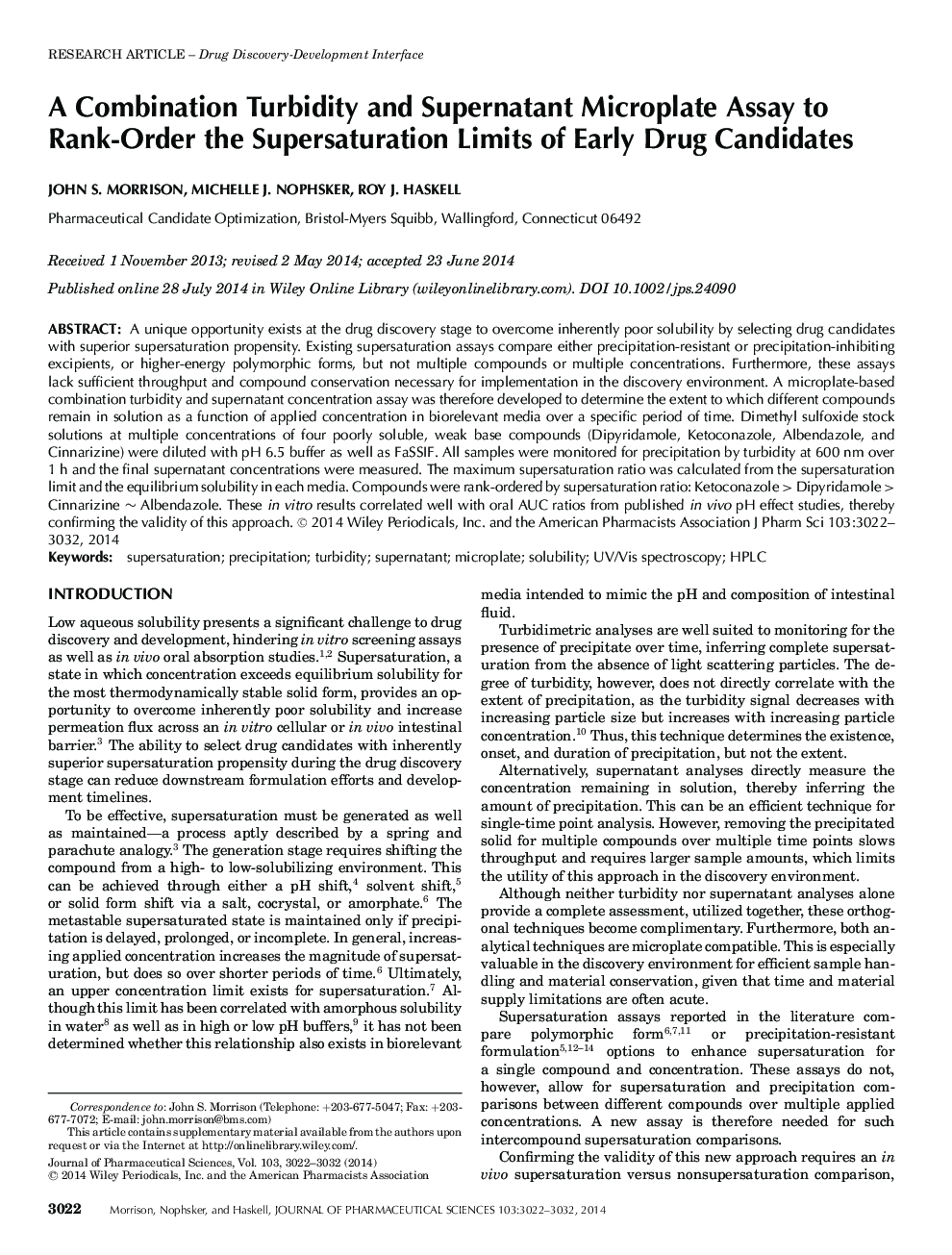| Article ID | Journal | Published Year | Pages | File Type |
|---|---|---|---|---|
| 2484654 | Journal of Pharmaceutical Sciences | 2014 | 11 Pages |
Abstract
A unique opportunity exists at the drug discovery stage to overcome inherently poor solubility by selecting drug candidates with superior supersaturation propensity. Existing supersaturation assays compare either precipitationâresistant or precipitationâinhibiting excipients, or higherâenergy polymorphic forms, but not multiple compounds or multiple concentrations. Furthermore, these assays lack sufficient throughput and compound conservation necessary for implementation in the discovery environment. A microplateâbased combination turbidity and supernatant concentration assay was therefore developed to determine the extent to which different compounds remain in solution as a function of applied concentration in biorelevant media over a specific period of time. Dimethyl sulfoxide stock solutions at multiple concentrations of four poorly soluble, weak base compounds (Dipyridamole, Ketoconazole, Albendazole, and Cinnarizine) were diluted with pH 6.5 buffer as well as FaSSIF. All samples were monitored for precipitation by turbidity at 600 nm over 1 h and the final supernatant concentrations were measured. The maximum supersaturation ratio was calculated from the supersaturation limit and the equilibrium solubility in each media. Compounds were rankâordered by supersaturation ratio: Ketoconazole > Dipyridamole > Cinnarizine â¼ Albendazole. These in vitro results correlated well with oral AUC ratios from published in vivo pH effect studies, thereby confirming the validity of this approach. © 2014 Wiley Periodicals, Inc. and the American Pharmacists Association J Pharm Sci 103:3022-3032, 2014
Keywords
Related Topics
Health Sciences
Pharmacology, Toxicology and Pharmaceutical Science
Drug Discovery
Authors
John S. Morrison, Michelle J. Nophsker, Roy J. Haskell,
